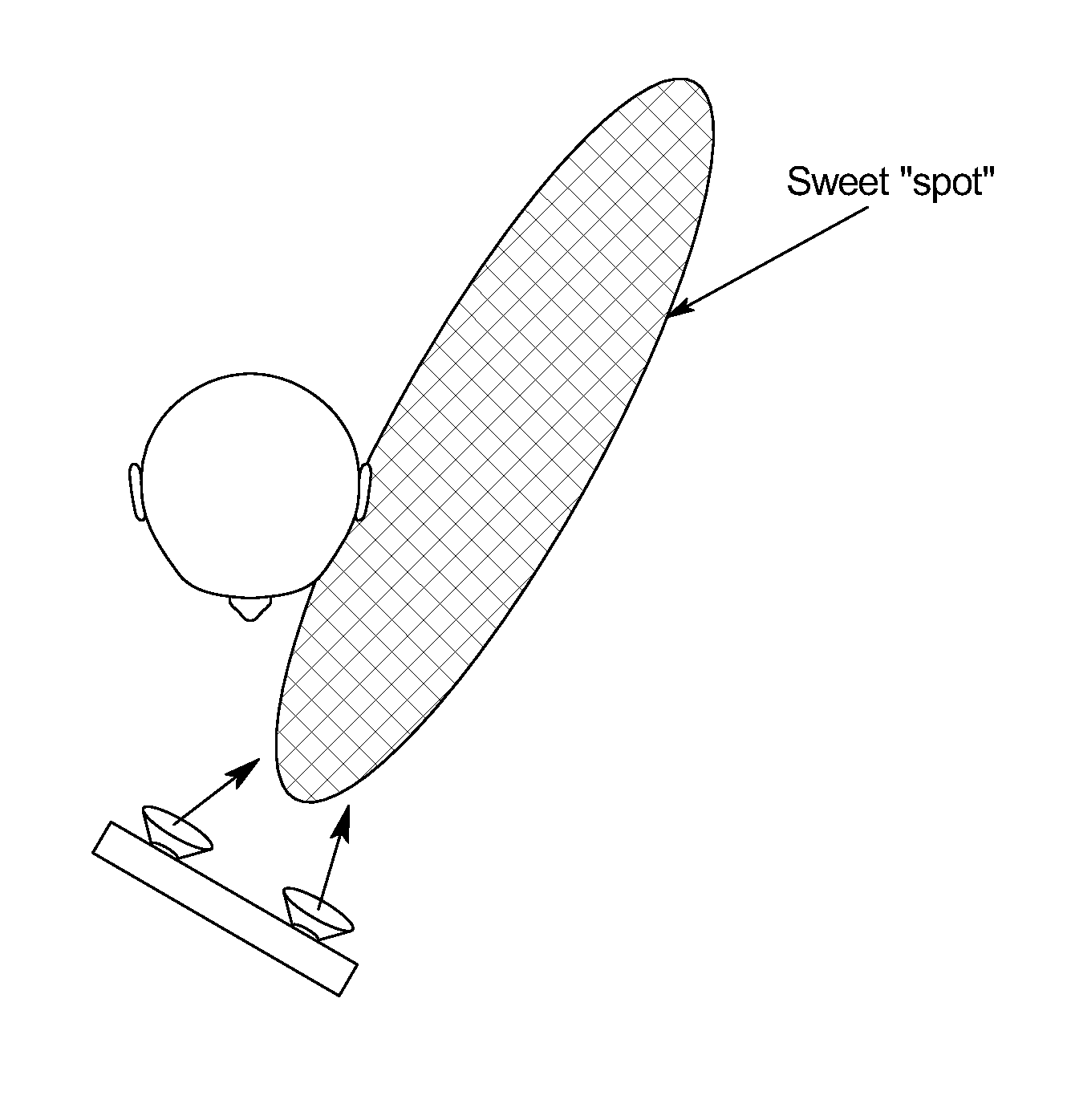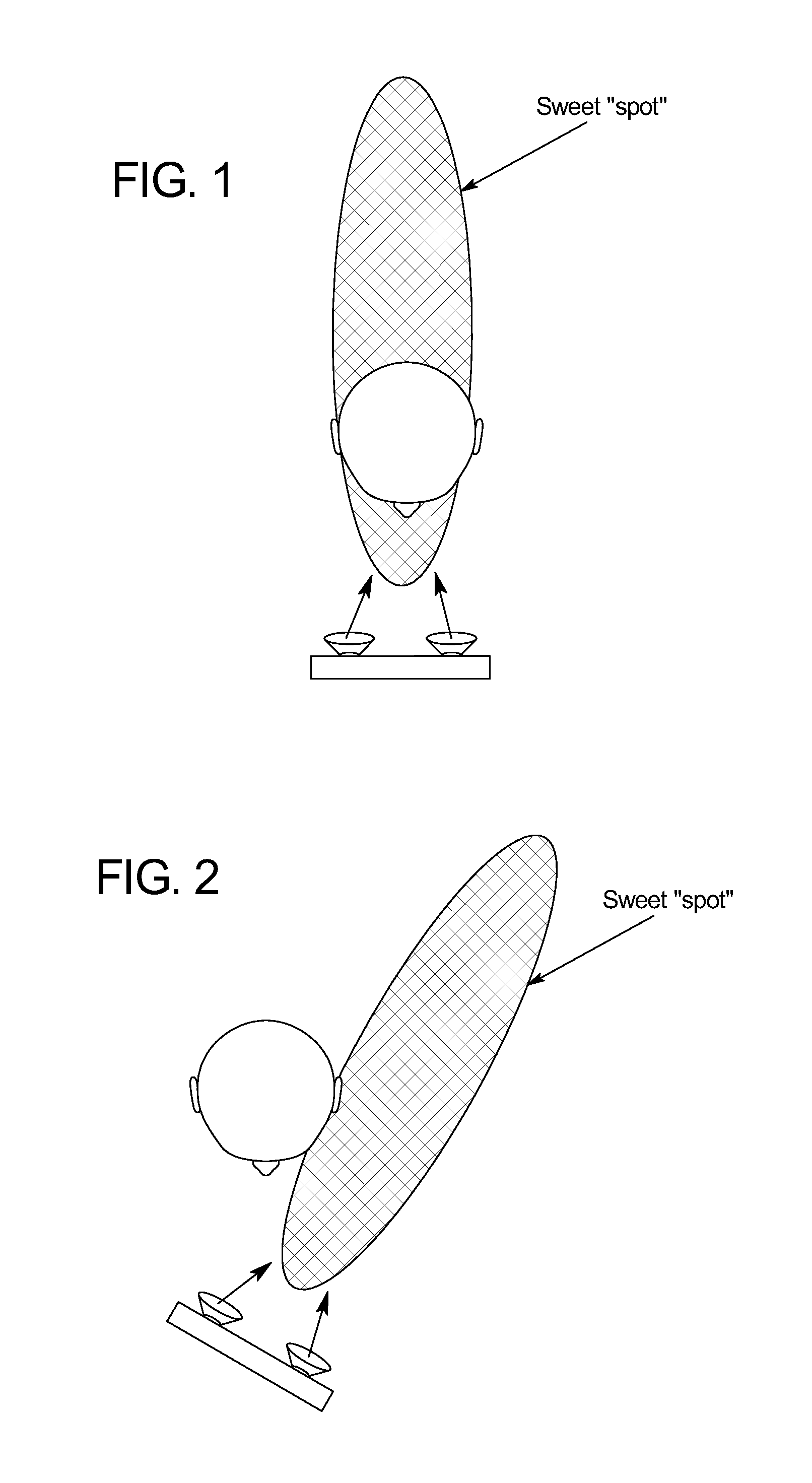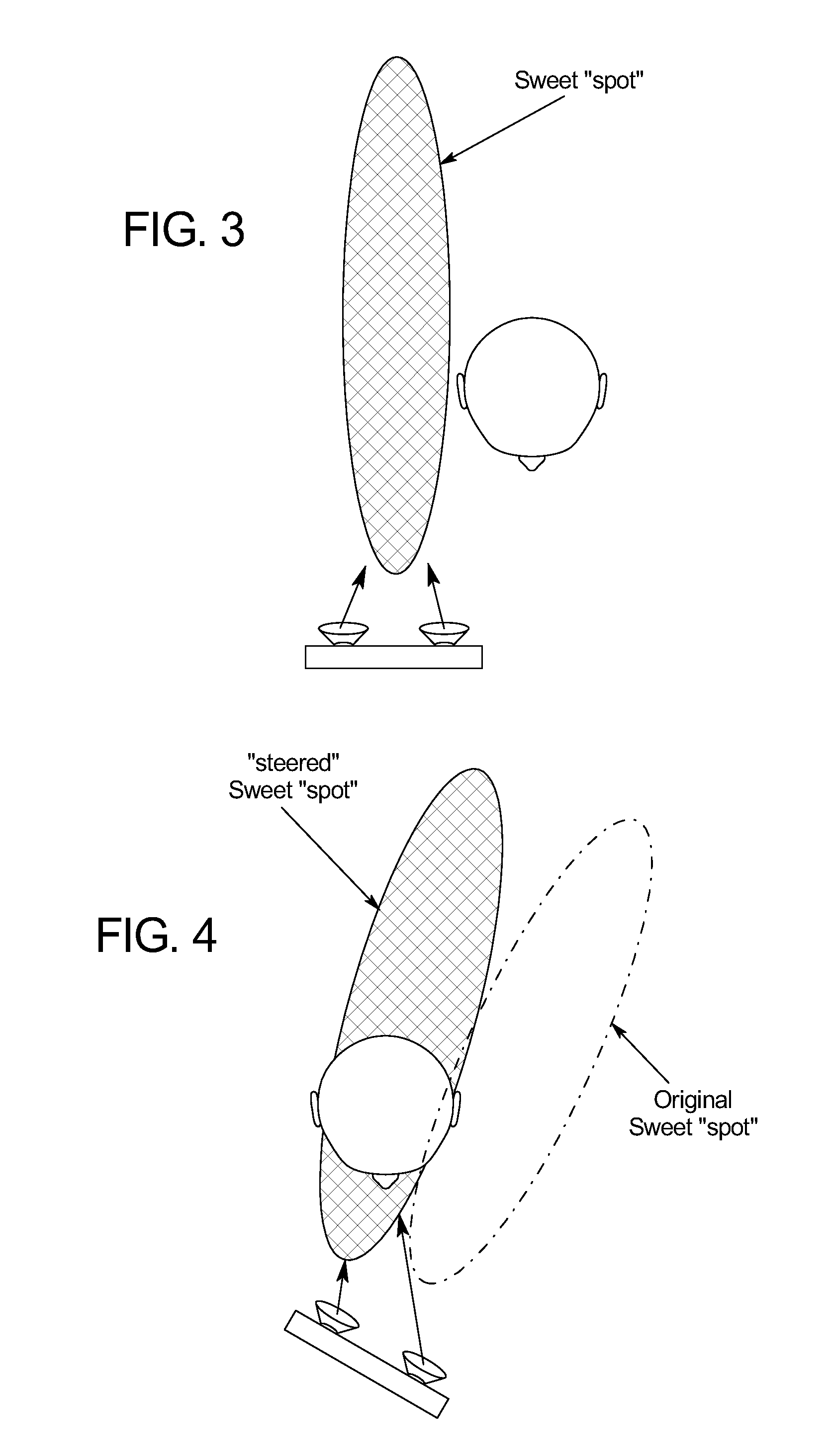Automatic audio sweet spot control
a technology of automatic control and sweet spot, applied in the direction of stereophonic system, electrical apparatus, stereophonic arrangments, etc., can solve the problems of relying on facial recognition equipment and software, particularly troublesome sweet spot location, and audio quality suffers
- Summary
- Abstract
- Description
- Claims
- Application Information
AI Technical Summary
Benefits of technology
Problems solved by technology
Method used
Image
Examples
Embodiment Construction
[0036]FIG. 5 illustrates a preferred embodiment of a handheld device 10 according to the present invention. As shown in FIG. 5, the device 10 includes two speakers 12, an audio processor 14, an orientation sensor 16 and a camera 18. In the example shown in FIG. 5, the device 10 is a handheld game console. However, it is understood that the present invention is applicable to numerous types of devices 10, including smartphones, handheld computers, etc. It is further contemplated that various embodiments of the device 10 may incorporate a greater number of speakers 12, various types and numbers of orientation sensors 16, and may or may not include the camera 18 or other types of location sensing elements.
[0037]The speakers 12 shown in FIG. 1 are a pair of speakers 12 for playback of stereo audio content. Special speakers 12 are not required; the teachings of the present subject matter are applicable to devices 10 incorporating any type of speakers12.
[0038]While described generally here...
PUM
 Login to View More
Login to View More Abstract
Description
Claims
Application Information
 Login to View More
Login to View More - R&D
- Intellectual Property
- Life Sciences
- Materials
- Tech Scout
- Unparalleled Data Quality
- Higher Quality Content
- 60% Fewer Hallucinations
Browse by: Latest US Patents, China's latest patents, Technical Efficacy Thesaurus, Application Domain, Technology Topic, Popular Technical Reports.
© 2025 PatSnap. All rights reserved.Legal|Privacy policy|Modern Slavery Act Transparency Statement|Sitemap|About US| Contact US: help@patsnap.com



